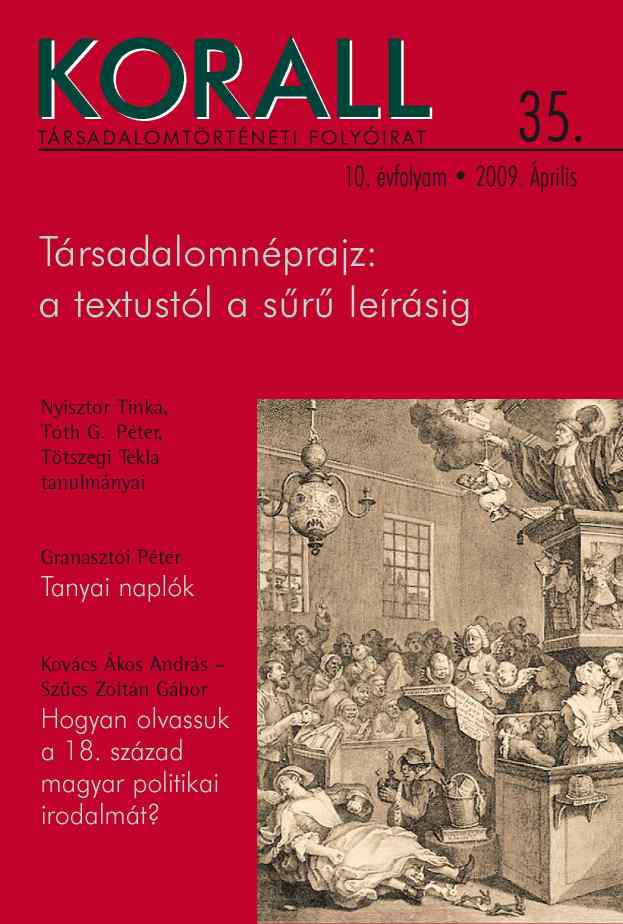Ruhatár és státusteremtés a kalotaszegi Mérán
Wardrobe and status in Méra in the Kalotaszeg region
Author(s): Tekla TötszegiSubject(s): History
Published by: KORALL Társadalomtörténeti Egyesület
Summary/Abstract: This essay examines the relationship between clothing and values, and between clothing and status, through the study of the traditional female wardrobe in a Transylvanian settlement, generally defined in folklore scholarship as belonging to the Nádas valley of the Kalotaszeg region. It also focuses on the role of garments in the coding of family memory, maintaining relationships, and the public display of kinship network. The examination of fifteen traditional female wardrobes in the first part of the study draws attention to the variety of factors that determine the qualitative and quantitative variation of garments in the life-long wardrobes, which the women of Méra received in a set before their wedding. Such factors include the current and previous financial situation and status of the family, the presence of a strong and generous female kinship, or the lack thereof, the merits of the mother and daughter (standards, skills, creativity, diligence), and the personal attitudes towards clothing within the family. On one hand, the qualitative interpretation of garments requires knowledge of the families’ economic situation, structure (extended or nuclear family houshold, number of siblings, especially sisters), and lifestyle strategies. On the other hand, the temporal attributes (how long each garment is considered new and fashionable, and when a type of material or feature wears out of festive status), the prestige and availability of materials are also important factors. The second part of the essay concluded by a case study, traces the possible career of the garments in a wardrobe through accounts that shed light on the kinship network of blood- and affinial relations, as well as the customs of the community with regard to certain garments. Besides newly made garments, pieces handed down or borrowed from mother, grandmother, great-grandmother, or other relatives are, to a varied extent, definitive in the composition of the wardrobe of a marrying daughter. Individuals are mere ’curators’ of their garments: links in the chain of the generations of female family members using those before and after them. During married life, this wardrobe is complemented by garments presented to the new wife by her mother-in-law, and later on also by clothes gradually handed down by mothers as they stop wearing them after a certain age. Both multigenerational and new garments are sources of self-esteem for the family. The pretext of kitting out a marrying daughter strengthens and animates kinship as a system of relations assumed and maintained by the family members. The creation and use of garments reflect a rich and multilayered web of relations, which permeate the community’s whole life, feast days and weekdays alike.
Journal: Korall - Társadalomtörténeti folyóirat
- Issue Year: 2009
- Issue No: 35
- Page Range: 73-71
- Page Count: 29
- Language: Hungarian

